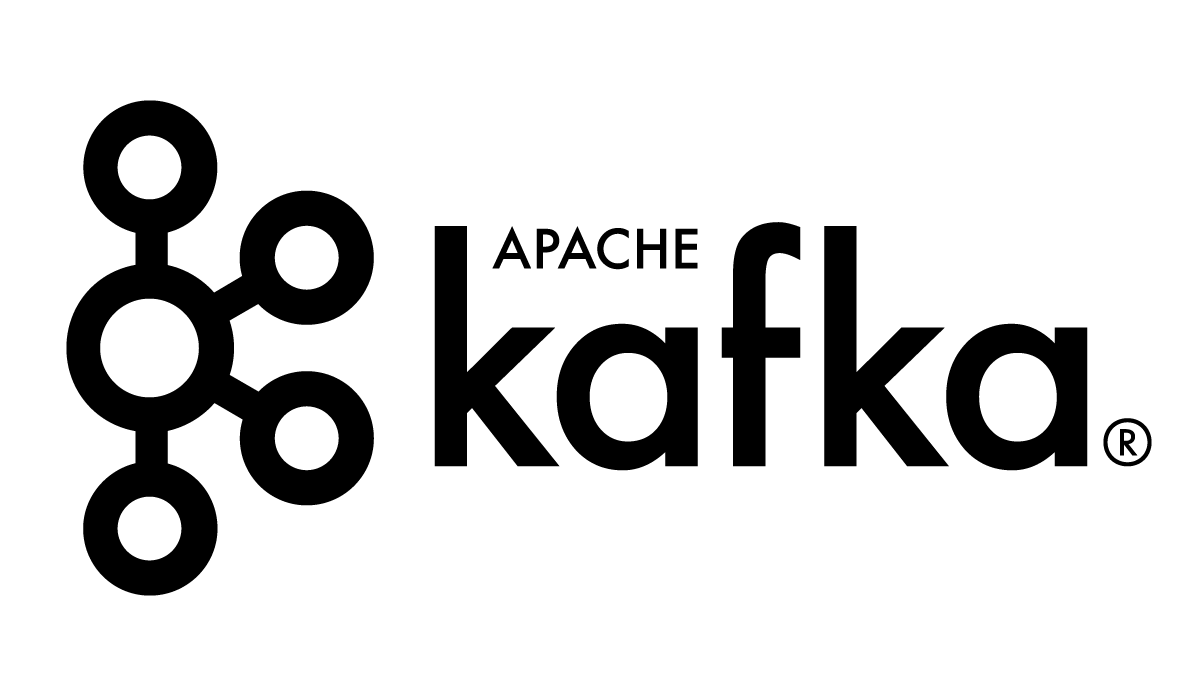在上一篇文章 Spring 扩展点概览及实践 中介绍了 Spring 内部存在的扩展点。 Spring 扩展点实践:整合 MyBATIS 中,D瓜哥带大家了解了一下 MyBATIS 如何利用 Spring 的扩展点实现了与 Spring 的完美整合。现在,学以致用,我们继续来分析一下 Spring 与 Apache Dubbo 的整合流程。
示例程序 Apache Dubbo 仓库中就有很完整的示例。D瓜哥直接拿来使用就不再搭建示例程序了。
首先,需要启动一个 ZooKeeper 实例。查看 Dubbo 的依赖可以看出,最新版代码依赖的 ZooKeeper 是 3.4.13 版。所以,为了最好的兼容性,就要选用 3.4.X 版的 ZooKeeper 服务器。D瓜哥直接使用 Docker 启动 ZooKeeper 了。命令如下:
docker run --rm --name zookeeper -d -p 2181:2181 zookeeper:3.4.14 这次我们使用 Apache Dubbo 的 dubbo-demo/dubbo-demo-xml 示例。
第二步,启动服务提供者程序,找到 DUBBO/dubbo-demo/dubbo-demo-xml/dubbo-demo-xml-provider/src/main/java/org/apache/dubbo/demo/provider/Application.java,运行该类。
第三步,运行服务消费者程序,找到 DUBBO/dubbo-demo/dubbo-demo-xml/dubbo-demo-xml-consumer/src/main/java/org/apache/dubbo/demo/consumer/Application.java,运行该类。
如果没有任何错误,则在终端可以看到 result: async result 输出。
在开始正餐之前,D瓜哥先给大家来个开胃菜。
Spring 插件机制简介 不知道大家有没有想过一个问题:Spring 框架是如何支持越来越多的功能的?
Kafka 是由 LinkedIn 开发的一个分布式的消息系统,使用 Scala 编写,它以可水平扩展和高吞吐率而被广泛使用。Kafka 本身设计也非常精巧,有很多关键的知识点需要注意。在面试中,也常常被问到。整理篇文章,梳理一下自己的知识点。
架构设计问题 Kafka 整体架构如下:
Figure 1. Kafka 架构 Kafka 架构分为以下几个部分
Producer:消息生产者,就是向 Kafka Broker 发消息的客户端。
Consumer:消息消费者,向 Kafka Broker 取消息的客户端。
Topic:可以理解为一个队列,一个 Topic 又分为一个或多个分区。
Consumer Group:这是 Kafka 用来实现一个 Topic 消息的广播(发给所有的 Consumer)和单播(发给任意一个 Consumer)的手段。一个 Topic 可以有多个 Consumer Group。
Broker:一台 Kafka 服务器就是一个 Broker。一个集群由多个 Broker 组成。一个 Broker 可以容纳多个 Topic。
Partition:为了实现扩展性,一个非常大的 Topic 可以分布到多个 Broker上,每个 Partition 是一个有序的队列。Partition 中的每条消息都会被分配一个有序的id(offset)。将消息发给 Consumer,Kafka 只保证按一个 Partition 中的消息的顺序,不保证一个 Topic 的整体(多个 Partition 间)的顺序。
Offset:Kafka 的存储文件都是按照 offset.Kafka 来命名,用 offset 做名字的好处是方便查找。例如你想找位于 2049 的位置,只要找到 2048.
在 深入剖析 Spring 核心数据结构:BeanDefinition 中,介绍了 BeanDefinition。网上很多文章介绍 BeanDefinition 的 API,D瓜哥却要反其道而行之,从内部属性来分析一下。下面我们开始。
继承体系 Spring 非常好地遵循了面向对象的设计原则:面向接口编程。不放过任何可以提取出成接口的机会。虽然感觉似乎增加了类的继承关系,增加了一点的复杂度。但是,却带来了非常好的可扩展性。而 BeanFactory 的继承体系就是一个非常典型的例子。我们来看一下它的继承体系:
Figure 1. BeanFactory 继承体系 AliasRegistry:别名注册器。Spring 中,别名注册相关的功能就是从这里实现的。
SimpleAliasRegistry:别名注册器的一个简单实现,从内部属性可以看出,它是把别名映射信息存到一个 Map 中了。
DefaultSingletonBeanRegistry:默认的单例 Bean 注册器,从内部属性来说,也是基于 Map 实现的。
FactoryBeanRegistrySupport: FactoryBean 注册器。
SingletonBeanRegistry:单例 Bean 注册器。
BeanDefinitionRegistry: BeanDefinition 注册器。
BeanFactory:容器的基类。
ListableBeanFactory:在基本容器基础上,增加了遍历相关功能。
HierarchicalBeanFactory:在基本容器基础上,增加了父子上下级容器关联。
AutowireCapableBeanFactory:在基本容器基础上,增加了自动注入功能。
ConfigurableBeanFactory:对容器增加可配置性,比如父级容器、ClassLoader、TypeConverter 等。
ConfigurableListableBeanFactory:可配置可遍历容器。
AbstractBeanFactory:容器的抽象实现类,实现了容器的基础功能。
AbstractAutowireCapableBeanFactory:带自动装配功能的抽象容器类。
DefaultListableBeanFactory:这是 Spring 内部使用的默认容器实现。也是 Spring 中最重要的一个类。
核心属性 Registry Map<String, String> aliasMap = new ConcurrentHashMap<>(16):别名到 Bean 名称的映射。
Map<String, Object> singletonObjects = new ConcurrentHashMap<>(256):Bean 名称到单例 Bean 的映射。可以理解成,这就是所谓的容器。
林纳斯·托瓦兹(Linus Torvalds)说:“我从心底认为,优秀的程序员与平庸的程序员之间的区别,是在于认为自己的代码重要还是数据结构更加重要。平庸的程序员眼里只有代码,优秀的程序员则关注数据结构及之前的关系。” 也许很多人觉得 Spring 神秘莫测,但是如果了解了它的核心数据结构,很多问题迎刃而解。
Spring 中两个数据结构最核心:① BeanDefinition,用于表示 Bean 的定义;② BeanFactory,用于表示整个 IoC 容器。
在前面文章 Spring Bean 生命周期概述中,介绍了 Spring Bean 的生命周期。不知道大家有没有思考过 Spring 在内部是如何表示一个 Bean 的?本篇文章,就来聊一聊 BeanDefinition
问题 使用 Spring 时,尤其是使用 XML 配置的时候,也许我们会这样的问题:
Bean 怎么表示?
Bean 的依赖怎么表示?
init-method 方法怎么存储?
Bean 的一些属性,比如 lazy-init 等,怎么表示?
Bean 构造函数的参数怎么存储?
…
Java 也有类似的问题,比如怎么表示一个类?Java 通过反射 API 来解决这个问题:
Class
Method
Field
Constructor
Annotation
但是,为什么 Spring 还要自己定义一套呢?主要原因是 Java 反射 API 不满足 Spring 的需求,比如,它没办法表示哪些类是 SCOPE_SINGLETON,哪些类是 SCOPE_PROTOTYPE。
另外,Spring 的 Bean 抽象也并不是完全自定义的,它是基于 Java 反射 API 又增加了自定义功能,其核心 API 就是 BeanDefinition。下面,我们来仔细看一下它的继承体系以及内部核心属性。
AOP 是 Spring 框架的最核心的两个功能之一,在前面的 Spring 启动流程概述 和 Spring Bean 生命周期概述 两篇文章中,分别介绍了 Spring 启动过程和 Spring Bean 的生命周期,对 IoC 有了一个细致介绍。这里来细致分析一下 Spring AOP 的实现原理和处理流程。
基本概念 先来了解几个基本概念,D瓜哥私以为这些概念是 AOP 中最核心的内容,了解了基本概念,可以说基本上掌握了一半的 AOP 内容。
学习概念最权威的地方,当然就是官方文档。所以,这些概念可以在 Spring Framework Documentation: AOP Concepts 中看到最权威的介绍。
Join point(连接点): 所谓的连接点是指那些被拦截到的点。在 Spring 中,连接点指的是方法,因为 Spring 只支持方法类型的连接点。在 Spring 中,使用
Pointcut(切入点): 所谓的切入点,是指要对哪些 Join point(连接点) 进行拦截的定义。如果 Join point(连接点) 是全集,那么 Pointcut(切入点) 就是被选中的子集。写 AOP 代码的时候,一般是用 Pointcut(切入点) 表达式进行对 Join point(连接点) 进行选择。
Advice(通知/增强): 所谓的通知就是指拦截到 Join point(连接点) 之后所要做的事情。通知根据作用位置不同,又细分为:
Before advice(前置通知): 在 Join point(连接点) 之前运行的通知。这种通知,不能阻止执行流程继续到 Join point(连接点)。
在 Spring 启动流程概述 中,分析了 Spring 的启动流程。本文就来说明一下 Spring Bean 整个生命周期。如果有不清楚的地方,可以参考上文的“附录:启动日志”。
直接上图:Spring Bean 生命周期流程图。内容较多,图片文字偏小,请放大看(矢量图,可以任意放大):
Figure 1. Spring Bean 生命周期流程图 下面是文字说明。
Bean 生命周期简述 调用 InstantiationAwareBeanPostProcessor#postProcessBeforeInstantiation,主要是判断 AnnotationAwareAspectJAutoProxyCreator 是否可以生成代理。
调用构造函数
调用 MergedBeanDefinitionPostProcessor#postProcessMergedBeanDefinition,主要是通过 CommonAnnotationBeanPostProcessor、 AutowiredAnnotationBeanPostProcessor 收集依赖信息。
InstantiationAwareBeanPostProcessor#postProcessAfterInstantiation,这步什么也没做。
调用 InstantiationAwareBeanPostProcessor#postProcessProperties,主要是完成依赖注入。
调用 AutowiredAnnotationBeanPostProcessor#setBeanFactory,注入 BeanFactory 等相关信息。
调用 BeanPostProcessor#postProcessBeforeInitialization,主要是注入 ApplicationContext 等相关信息。
调用 InitializingBean#afterPropertiesSet、 init-method 方法
调用 BeanPostProcessor#postProcessAfterInitialization,主要是生成 AOP 代理类。
Bean 生命周期详解 从 getBean() 方法获取 Bean 时,如果缓存中没有对应的 Bean,则会创建 Bean,整个流程如下:
InstantiationAwareBeanPostProcessor#postProcessBeforeInstantiation — 目前有如下四个:
ImportAwareBeanPostProcessor — 继承父类实现,无所事事。
AnnotationAwareAspectJAutoProxyCreator — 继承父类实现,判断是否属于基础切面类,如果有指定的 Target 则生成代理。
对于 Spring 启动流程和 Bean 的生命周期,总有一些小地方搞的不是很清楚,干脆直接通过修改代码增加日志输出,使用断点单步调试,把整个流程捋顺了一点点的。
除了加载配置文件或者基础配置类外,Spring 的启动过程几乎都被封装在 AbstractApplicationContext#refresh 方法中,可以说弄清楚了这个方法的执行过程,就摸清楚了 Spring 启动全流程,下面的流程分析也是以这个方法为骨架来展开的。
流程概要 下面完整流程有些太复杂,所以,提炼一个简要的过程,方便糊弄面试官,哈哈哈😆
创建容器,读取 applicationContext.register(Config.class) 指定的配置。
准备 BeanFactory,注册容器本身和 BeanFactory 实例,以及注册环境配置信息等。
执行 BeanDefinitionRegistryPostProcessor#postProcessBeanDefinitionRegistry 注册 BeanDefinition。有三点需要注意:
目前只有一个 ConfigurationClassPostProcessor 实现类,Spring 中大量的 Bean 都是在这一步被该类注册到容器中的。
执行顺序是 ① PriorityOrdered ② Ordered ③ 普通的顺序来执行
在执行上一步时,如果发现注册了 BeanDefinitionRegistryPostProcessor 类型的 Bean,就会在循环里继续调用 postProcessBeanDefinitionRegistry 方法。MyBATIS 和 Spring 整合的 MapperScannerConfigurer 类就是在这一步执行的。
执行 BeanFactoryPostProcessor#postProcessBeanFactory 方法。目前只有一个 ConfigurationClassPostProcessor 实现类。
注册 CommonAnnotationBeanPostProcessor 和 AutowiredAnnotationBeanPostProcessor 为 BeanPostProcessor。
注册 ApplicationEventMulticaster,用于广播事件的。
注册 ApplicationListener
预加载以及注册所有非懒加载的 Bean
启动时序图 Spring 启动流程的时序图如下:
Figure 1.
在上一篇文章 Spring 扩展点概览及实践 中介绍了 Spring 内部存在的扩展点。学以致用,现在来分析一下 Spring 与 MyBATIS 的整合流程。
示例程序 为了方便分析源码,先根据官方文档 mybatis-spring – MyBatis-Spring | Getting Started 搭建起一个简单实例。
数据库方面,直接使用功能了 MySQL 示例数据库: MySQL : Employees Sample Database,需要的话,自行下载。
package com.diguage.truman.mybatis; import com.mysql.cj.jdbc.Driver; import com.zaxxer.hikari.HikariDataSource; import org.apache.ibatis.session.Configuration; import org.junit.jupiter.api.Test; import org.mybatis.spring.SqlSessionFactoryBean; import org.mybatis.spring.annotation.MapperScan; import org.springframework.beans.factory.annotation.Autowired; import org.springframework.context.annotation.AnnotationConfigApplicationContext; import org.springframework.context.annotation.Bean; import javax.sql.DataSource; /** * @author D瓜哥, https://www.diguage.com/ * @since 2020-05-29 17:11 */ public class MybatisTest { @Test public void test() { AnnotationConfigApplicationContext context = new AnnotationConfigApplicationContext(); context.
学习 Spring 代码,最重要的是掌握 Spring 有哪些扩展点,可以利用这些扩展点对 Spring 做什么扩展操作。说得更具体一点,如果自己开发一个框架,如何与 Spring 进行整合,如果对 Spring 的扩展点有一个比较清晰的认识,势必会事半功倍。
@Import 先来看一下 @Import 注解的定义:
@Target(ElementType.TYPE) @Retention(RetentionPolicy.RUNTIME) @Documented public @interface Import { /** * {@link Configuration @Configuration}, {@link ImportSelector}, * {@link ImportBeanDefinitionRegistrar}, or regular component classes to import. */ Class<?>[] value(); } 从声明可以看出,使用时,只需要指定 Class 实例即可;从方法的文档中可以看出,Class 实例可以分为三种:ImportSelector、ImportBeanDefinitionRegistrar 和常规组件类。示例如下:
@Configuration @Import(LogImportSelector.class) public static class Config { } 在 org.springframework.context.annotation.ConfigurationClassParser#processImports 方法中,集中了对 @Import 注解的处理。从代码可以非常清晰地看出,分了三种情况进行处理:
ImportSelector
ImportBeanDefinitionRegistrar
常规组件 Class
下面分别对其进行介绍。
ImportSelector 先来看一下 ImportSelector 接口的定义:
以前无意间搜资料了解到 HikariCP,一下子就被它的简洁代码和卓越性能吸引住了。以前也有翻过它的代码,但是不是很系统,最近再次翻阅,正好做些笔记,方便以后学习。
D瓜哥最近在学习 Java 并发知识。那就从 HikariCP 自定义的并发集合 ConcurrentBag 开始学习。
在 HikariCP 的 Wiki 中,有 Down the Rabbit Hole · ConcurrentBag 的章节来专门介绍 ConcurrentBag:
ConcurrentBag 的灵感借鉴自 C# .NET 的 ConcurrentBag 类。但是实现却是完全不同的。这里的 ConcurrentBag 有如下特性:
A lock-free design
ThreadLocal caching
Queue-stealing
Direct hand-off optimizations
下面,通过代码来对此做个说明。
在 ConcurrentBag 类的定义中,声明了集合元素必须是 IConcurrentBagEntry 的子类。先来看看这个接口的定义:
public interface IConcurrentBagEntry { int STATE_NOT_IN_USE = 0; int STATE_IN_USE = 1; int STATE_REMOVED = -1; int STATE_RESERVED = -2; boolean compareAndSet(int expectState, int newState); void setState(int newState); int getState(); } 接下来,看一下成员变量:




